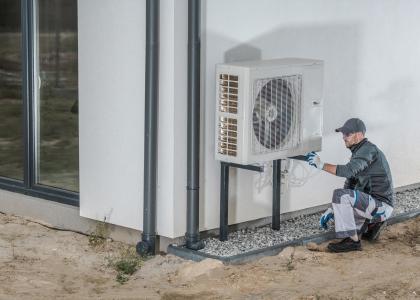Michigan’s ambitious new climate laws will advance energy efficiency and building electrification, with an extra focus on serving low-income households, alongside strong renewable energy and workforce provisions.
After a marathon session, the Michigan legislature passed a sweeping five-part legislative package last week that will make the state a national leader in saving energy and reducing climate pollution. This comprehensive set of legislation includes dramatic increases in renewable electricity generation, significant strengthening of utility energy efficiency requirements, and a first big step toward converting buildings from fossil fuels to electricity. Governor Gretchen Whitmer is expected to sign the legislation in the coming days. ACEEE was centrally involved in shaping these policies, working as part of a coalition of over 40 individuals and organizations.
The package includes:
- SB 271: Requires 60% of Michigan’s electricity to come from renewable sources by 2035 and 100% carbon-free power generation by 2040;
- SB 273: Strengthens requirements on utility energy efficiency programs and allows utilities to promote building electrification;
- SB 502: Expands the Michigan Public Service Commission’s authority to include climate, health, and equity issues when it evaluates utility resource plans;
- SB 519: Creates an Economic Transition Office to support former fossil fuel workers and others impacted by the transformation of the utility system; and
- HB 5020 and 5021: Eases siting approval to build wind and solar power facilities.
Much of ACEEE’s work focused on SB 273, the bill to improve Michigan’s energy efficiency law. Michigan already has a successful utility energy efficiency resource standard (EERS), which ACEEE helped establish in 2008. It requires utilities to achieve certain levels of energy savings through their efficiency incentive programs for customers. The new legislation amends that statute to accomplish several improvements, including:
1) Increasing the minimum energy savings requirements for both electric and gas utilities (from 1.0 to 1.5% of annual sales for electricity and from 0.75 to 0.875% for gas) and ramping up the top-end category of savings requirements for utilities to earn the maximum incentive (to more than 2.17% for electric utilities and more than 1.25% for gas utilities).
2) Enabling utilities in the state—for the first time—to provide households and businesses incentives to electrify fossil fuel-burning equipment like furnaces and water heaters, including the following provisions:
a. Municipal utilities and utility cooperatives can claim energy savings credit toward their electric savings targets by helping customers convert from fossil fuel-powered heating to high-efficiency cold climate heat pumps. Investor-owned electric utilities can promote heat pumps but cannot claim savings toward their energy efficiency requirements. That is to ensure they meet their energy savings targets through energy efficiency rather than just fuel switching (which actually increases electricity sales).
b. To make sure that building shell efficiency is not overlooked in electrification efforts, all utilities (including investor-owned electric utilities) can claim savings toward their efficiency goals for any building shell efficiency improvements they incentivize and that are done as part of a heat pump installation, regardless of the initial heating fuel (oil, propane, or gas).
3) Bringing municipal and co-op utilities back under the EERS statute (they had been exempted under a 2016 law).
4) Adding several requirements to increase energy efficiency services to low-income households. These include aggressive minimum spending requirements (25% of total energy efficiency spending for electric utilities and 35% for gas utilities), streamlining eligibility requirements, and establishing workforce and contractor training and hiring provisions to address equity issues.
This comprehensive package of legislation represents a major step forward in climate policy, and, significantly, it was accomplished in a state not traditionally known as a leader in that area. It is particularly noteworthy that the approach clearly establishes energy efficiency as a core component of climate policy.


